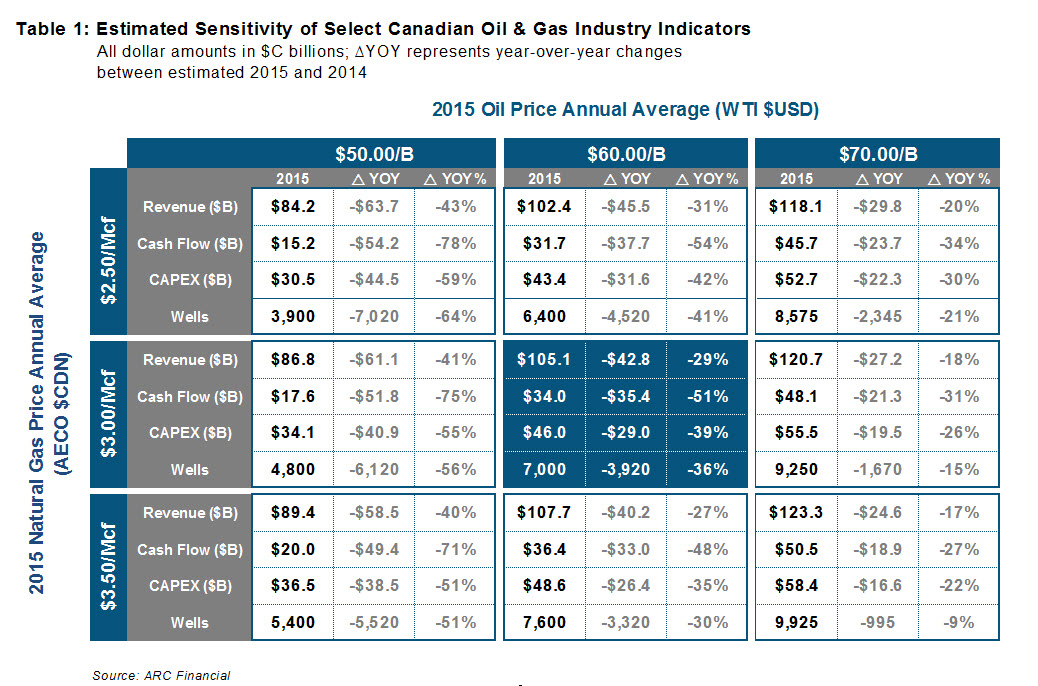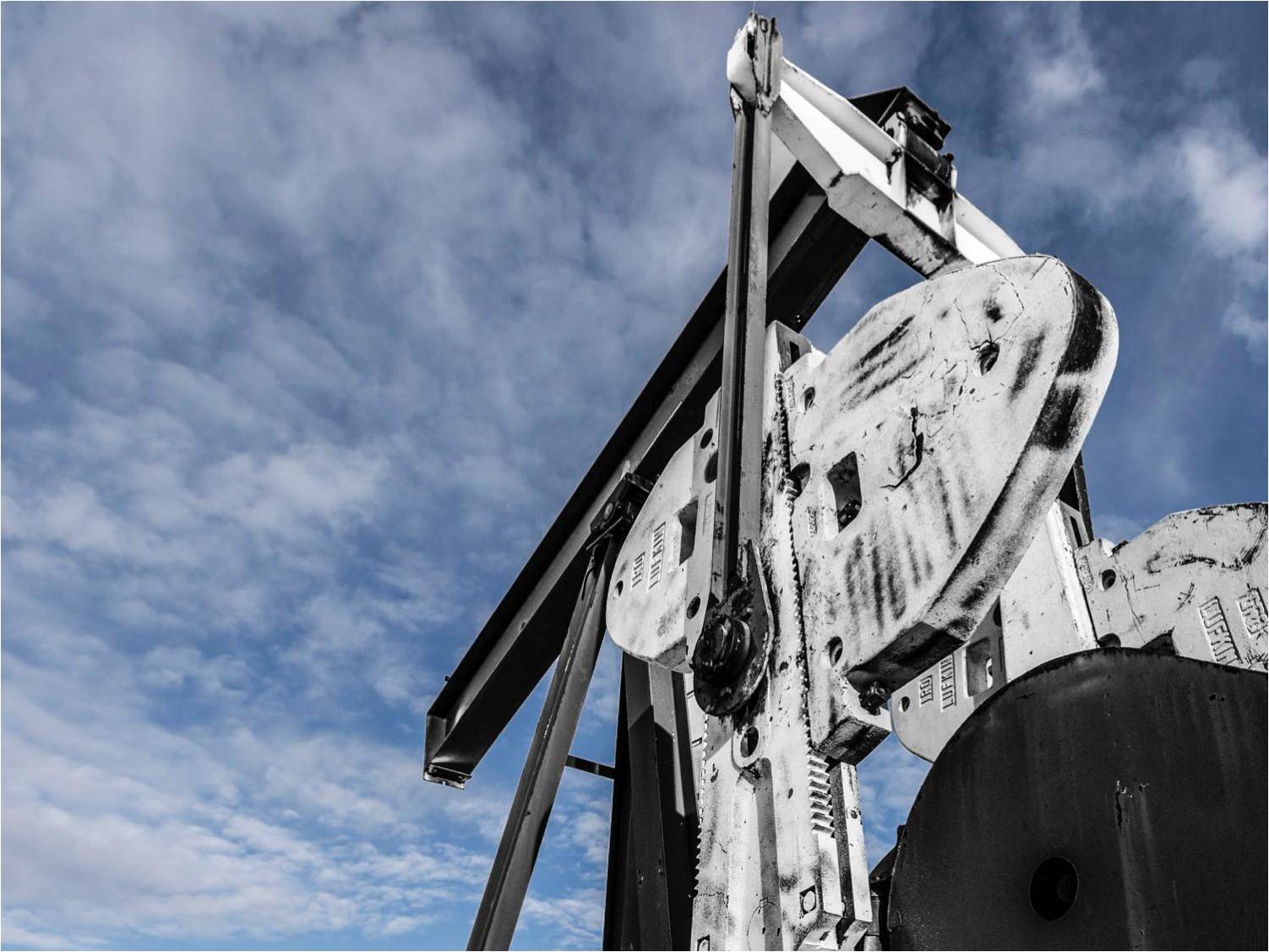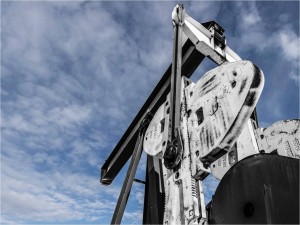Commentary – The Oilmageddon of 2015
Canadian oil and gas industry associations have delivered their outlooks for the coming year. Their forecasts are pretty grim. Job losses in the thousands, private and public sector budget cuts, drilling rigs banging against each other trying to find a parking spot. Realistically, the publicly published numbers are optimistic.
When it comes to industry downturns, I feel like I’m having a déjà vu of a déjà vu. Memories of other epic oilmageddons include 1985, 1998 and 2009. In-between, there have been other lesser episodes of low commodity prices too.
The pattern of events is always the same. Price drops, then upstream revenue gets hammered. Cash flow dries up, equity markets and banks stop offering money. Drill bits stop turning after companies slash their budgets. Jobs are cut and then the hurt ripples through the local economy after a three-month lag. The rest of the country feels the spending vacuum six months out. Meanwhile, government accountants sense an eerie quiet. The once-loud jangling sound of royalty, tax, and land sale dollars diminishes to an occasional clinking of coins in the till.
Years from now, when we start reminiscing to our grandchildren, the oil price drop of 2015 will rank as an epic. For those who are in denial (I am still hearing about real estate developers who don’t think they will be affected), consider that at least $50 billion will be taken out of the top-line economy this year, mostly in Alberta and Saskatchewan. That adds up to a few houses.
By springtime, winter drilling budgets will be fully spent and bank accounts will be hollow. Summer will be eerily quiet. Next winter will be cold in more ways than one if prices don’t recover by fall. And there is another antagonist that will thin out wallets: natural gas prices are also soft heading into this year.
It all sounds ominous and there isn’t much to coat with sugar at the moment. But déjà vu isn’t limited to downside flashbacks. The complex world of oil and gas is always full of surprises. Any number of outcomes is possible with multiple “expert” opinions for each. That’s why in this week’s column we present a table that adjusts to our readers’ expectations. Depending on what average oil and natural gas price combination you believe in for 2015, you can use Table 1 to estimate the impact in terms of dollars and wells.
It all sounds ominous and there isn’t much to coat with sugar at the moment. But déjà vu isn’t limited to downside flashbacks. The complex world of oil and gas is always full of surprises. Any number of outcomes is possible with multiple “expert” opinions for each. That’s why in this week’s column we present a table that adjusts to our readers’ expectations. Depending on what average oil and natural gas price combination you believe in for 2015, you can use Table 1 to estimate the impact in terms of dollars and wells.
 From Table 1 choose an oil and natural gas price average for 2015. In each corresponding box you will find four key metrics that measure the fiscal pulse of the industry: Revenue, Cash Flow, Capital Expenditures (CAPEX) and Well Count (Wells). For summary purposes, the oil sands and non-oil sands sectors are combined in Table 1 (click here for more detailed tables). If you are not directly in the oil and gas industry, and are trying to gauge the impact on the broader economy, the best pressure monitor is revenue.
From Table 1 choose an oil and natural gas price average for 2015. In each corresponding box you will find four key metrics that measure the fiscal pulse of the industry: Revenue, Cash Flow, Capital Expenditures (CAPEX) and Well Count (Wells). For summary purposes, the oil sands and non-oil sands sectors are combined in Table 1 (click here for more detailed tables). If you are not directly in the oil and gas industry, and are trying to gauge the impact on the broader economy, the best pressure monitor is revenue.
In the center of the grid, the price pair of $60/B (oil) and $3.00/Mcf (natural gas) is a notionally optimistic midpoint. Even at that, relative to 2014, the industry’s revenue will be down by 29% to $105.1 billion. Cash flow will be more crimped – down 51% to $34 billion – because operating costs don’t, and in many instances can’t, come down with commodity price. Capital expenditures run greater than cash flow at $46.0 billion, which doesn’t seem intuitive, but several large oil sands projects will continue to be built this year regardless of oil price. Note that well counts, one measure of field activity, fall harder as price goes lower.
If you are more bearish than a $50/B oil price average for 2015, then it’s a good idea to buy a cabin in the Yukon and hide. At least you won’t have to burn wood, because the price of oil and gas will be cheap. On the other hand, if you believe in prices above $70/B, feel free to share with us your insights into the Saudi government.
For additional guidance, we’re only a month into the New Year and oil (WTI) and natural gas have averaged $US 48/B and $2.78/Mcf respectively.
But don’t be too dejected if you are affected by this Canadian downturn. Today’s pain of sub-marginal price is universal throughout the global oil industry. Conservatively, producers around the world will be short over $1 trillion of oil revenue this year relative to last. Yet about $750 billion a year is needed to replace oil and gas reserves and satisfy growth. The numbers don’t go around; the deeper the capital starvation, the sooner there will be a supply response that remedies the imbalance. When it comes to industry downturns, I feel like I’m having a déjà vu of a déjà vu.



